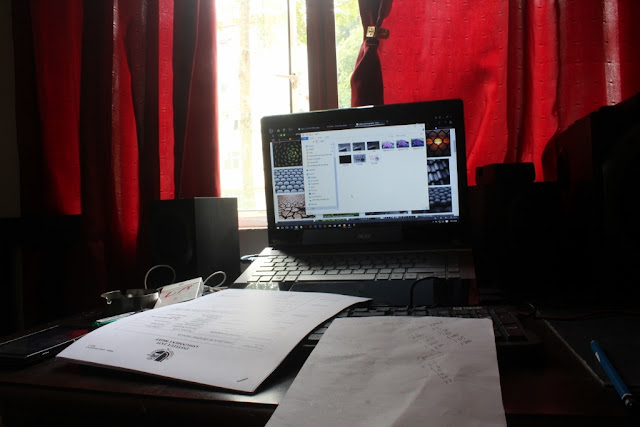DIGITAL PHOTOGRAPHY
INTRODUCTION
Aperture
- Referred to the lens diaphragm opening inside a photographic lenses.
- The size of the diaphragm opening in a camera lens regulates amount of light passes through onto the film inside the camera.
- Calibrated in f-number or f-stops. f/64, f/32, f/22, f/16, f/8.0, f/5.6, f/2.8, f/1.8
- Large aperture will decrease depth of field while small aperture will give you larger depth of field
Shutter Speed
- Also known as “exposure time”, stands for the length of time a camera shutter is open to expose light into the camera sensor
- If the shutter speed is fast, it can help to freeze action completely.
- The aperture diaphragm of a lens (bigger or smaller values) and timing (open and close) of the camera's shutter curtain (BOTH).
- 1/8000, 1/4000, 1/1000, 1/500, 1/250, 1/125, 1/60, 1/30, 1/15, 1/8, 1/4, 1/2, 1 or -1, -2 etc. are essentially indicators of the duration (timing) at which the shutter curtain opens up and closes during an exposure process.
- A 1/125 setting means the shutter curtain open and close within one hundred and twenty five of a second while 1 means an one full-second the shutter opens up during exposure to absorb the available light source onto the film to form an exposure.
ISO
- ISO is level of sensitivity of image sensor.
- The lower the number the less sensitive your camera is to light and the finer the grain/noise.
- Measured in numbers ISO 100, ISO 200, ISO 400, ISO 800, ISO 1600, ISO 3200.
- ISO 100 and ISO 200 is a base ISO.
- You should increase the ISO when there is not enough light, when there is plenty of light you should always use the number of base ISO.
Aperture
f 3.5
f 6.3
f 10
f 16
f 20
f 22
ISO
100
200
400
800
1600
6400
Shutter Speed
1.5
1.40
1.60
1.100
1.125
1.160
LIGHT AND SHADOW
Original :
Product (Shoes)
Photoshop Touch :
POTRAIT PHOTOGRAPHY
Original
Photoshop
























